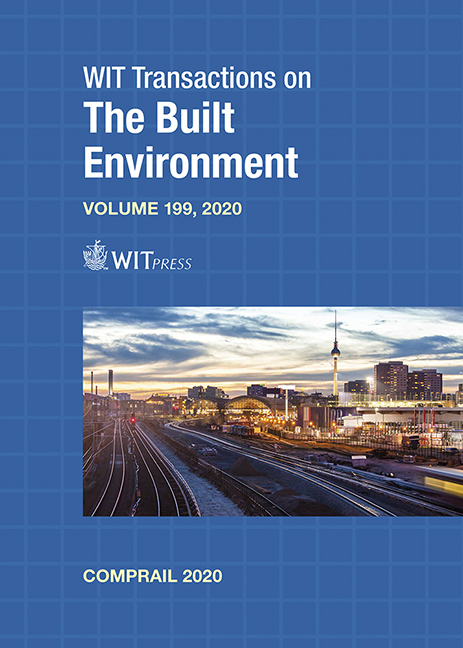DEVELOPMENT OF THE SIGNAL ARRANGEMENT EVALUATION SYSTEM
Price
Free (open access)
Transaction
Volume
199
Pages
13
Page Range
29 - 41
Published
2020
Paper DOI
10.2495/CR200031
Copyright
WIT Press
Author(s)
KAZUMASA KUMAZAWA, TAKAYASU KITANO, TAKASHI SAKAGUCHI, SHUNICHI TANAKA, SATOSHI KATO
Abstract
In order to construct new lines or to change track layouts in stations, it is necessary to determine the position of each signal, called an examination of the signal arrangement, in consideration of train operation and so on. To obtain the signal arrangement that satisfies the desired train operation, it is essential to consider headways. Furthermore, in the automatic block section, the signal aspect transition between adjacent signals must be determined, taking account of the position of each signal and so on. Therefore, to determine a signal arrangement requires a lot of time and a person who has the knowledge of both signalling system and train operation. To solve these problems, we developed a signal arrangement evaluation system. The system has two main functions. One function is the creation of the signal aspect transitions. In this function, this system calculates a braking distance corresponding to a signal aspect transition and checks whether the braking distance is lower than a distance between two signals or not. The other function is the creation of a headway diagram. In this function, the system calculates headways and checks whether the headways of all signals satisfy the desired train operation or not. In this paper, we explain these calculation logics and the structure of the developed system. In addition, we introduce a result of evaluating a signal arrangement in a model line by using the developed system.
Keywords
signalling system, train performance curve, train headway, automatic block system, signal aspect, examination of new railway lines, track layouts improvement





